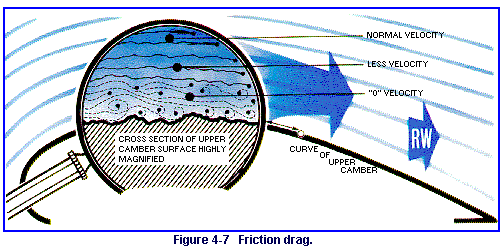 |
|||||
| Home | Research | For Teachers | HISTORY Level 1 Level 2 Level 3 |
PRINCIPLES Level 1 Level 2 Level 3 |
CAREER Level 1 Level 2 Level 3 |
| Gallery | Hot Links | What's New! | |||
| Web Administration and Tools | |||||
 |
|||||
| Home | Research | For Teachers | HISTORY Level 1 Level 2 Level 3 |
PRINCIPLES Level 1 Level 2 Level 3 |
CAREER Level 1 Level 2 Level 3 |
| Gallery | Hot Links | What's New! | |||
| Web Administration and Tools | |||||
![]()
Thrust is the force that propels the aircraft forward. Thrust for aircraft is obtained from the different types of engines discussed earlier. An airplane cannot gain altitude or maintain straight and level flight unless its engine is producing enough thrust to propel (pull or push) the airfoils fast enough to produce the needed amount of lift. Without this thrust, the airplane will continue to fly (it will not "drop out of the sky,' as many people think) but its flight becomes a gradual descent toward the ground.
Without the needed thrust, weight has more influence than lift and pulls the airplane toward the ground. Helping the force of weight is drag. Drag is present at all times and can be defined as the force which opposes thrust, or, better yet, it is the force which opposes all motion through the atmosphere and is parallel to the direction of the relative wind.(See Figure 4-7)

But, what causes drag? It is caused, purely and simply, by the resistance of air. Air, you will remember, is a fluid and has mass. When you stick your hand out of the window of a moving automobile, you do several things. First, you may violate the law in some sections of the country-in addition to possibly getting your hand clipped off by a tree! Second, you experience (or feel) the relative wind created by the car's forward movement. Remember the relative wind? It is the wind moving past an object and the object, in this case, is the car. Your hand, in effect, becomes an extension of the car in experiencing the relative wind. Third, you may possibly create lift. If you arch your hand slightly (you're really giving it some camber), your hand may tend to rise. If you place your hand at a slight angle to the relative wind, the impact air will cause your hand to rise. But fourth and for sure, you will encounter the resistance and experience drag. This drag will tend, then, to push your hand backwards.
Aircraft in flight encounter the same force as your hand, but aircraft are designed to fly, rather than to do all the things that your hand can do. Aeronautical engineers realize that drag, like the other forces acting on an aircraft in flight, is made up of a number of components. One way to look at the total drag is to divide it up into two fairly broad divisions, induced drag and parasite drag. Let's look at these two, one at a time.
Send all comments to ![]() aeromaster@eng.fiu.edu
aeromaster@eng.fiu.edu
© 1995-98 ALLSTAR Network. All rights reserved worldwide.
| Funded in part by | From Civil Air Patrol Educational Materials |
Updated: February 23, 1999